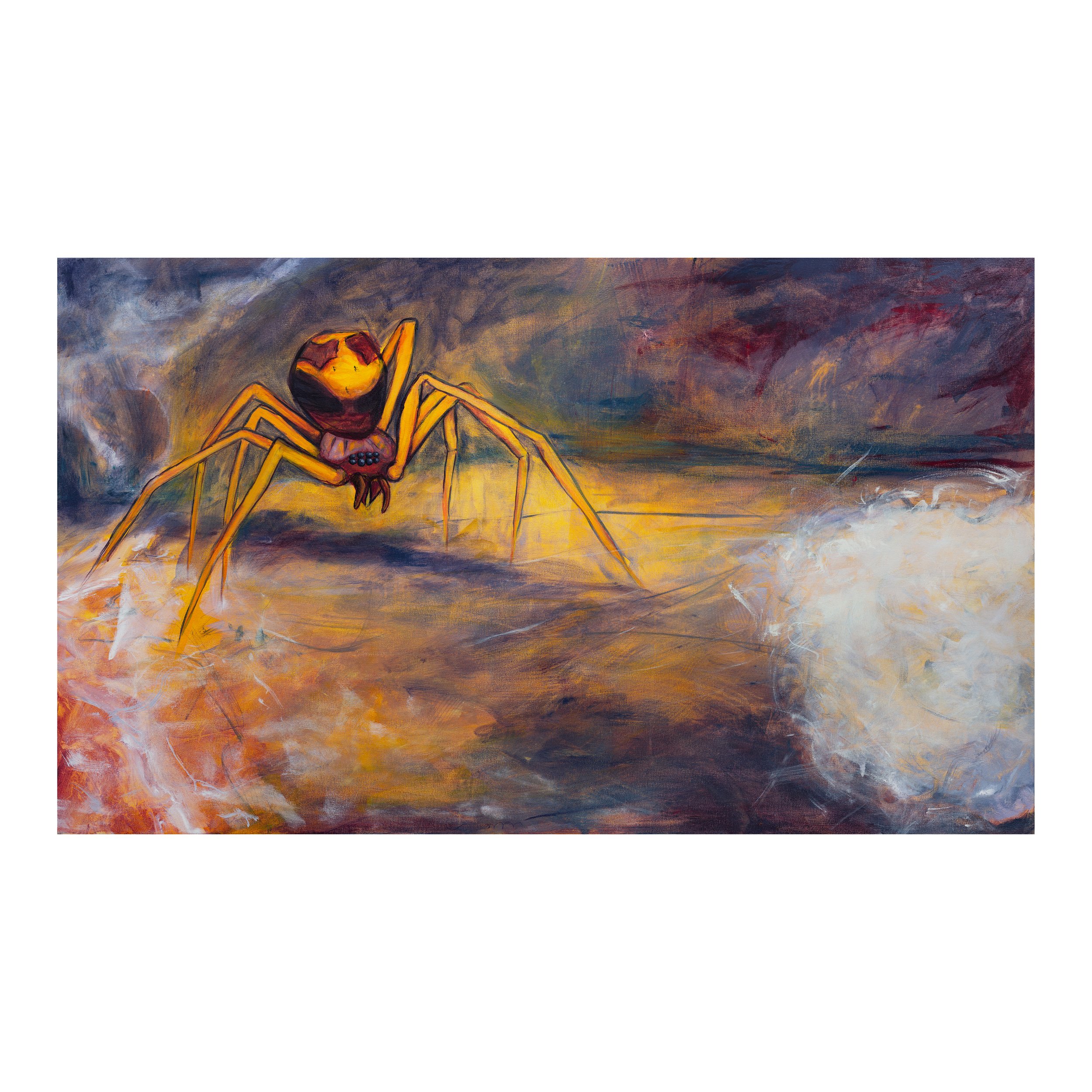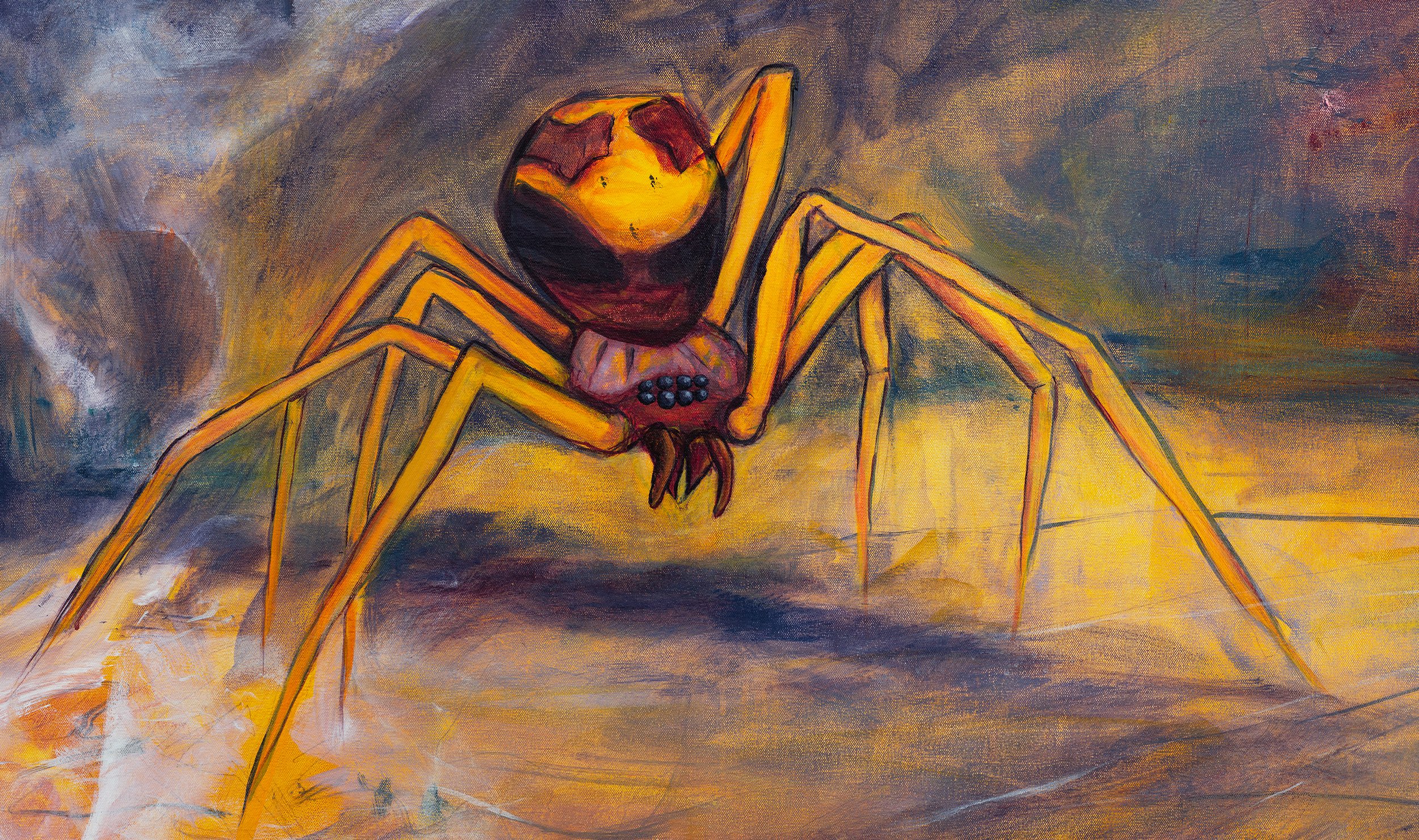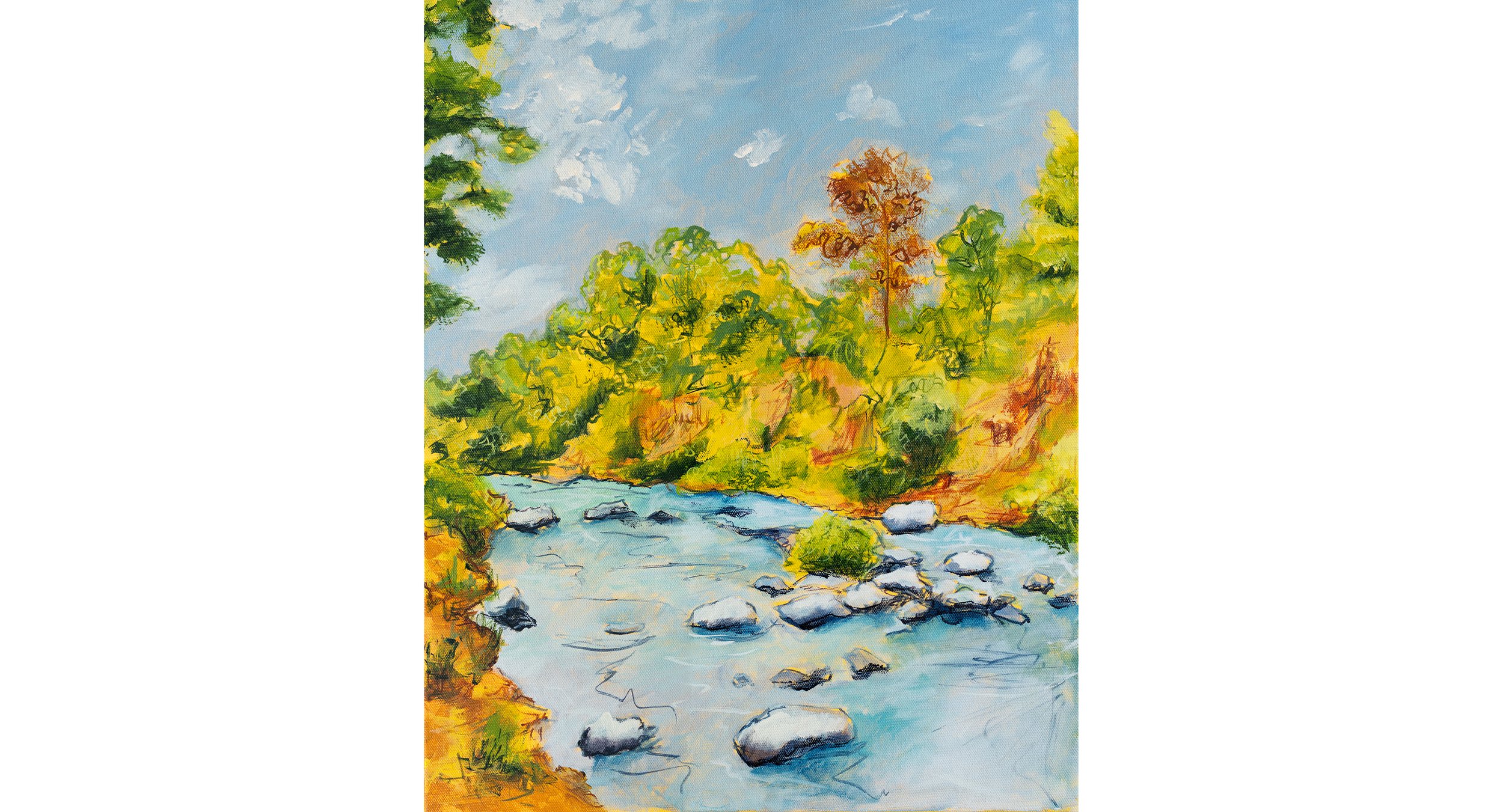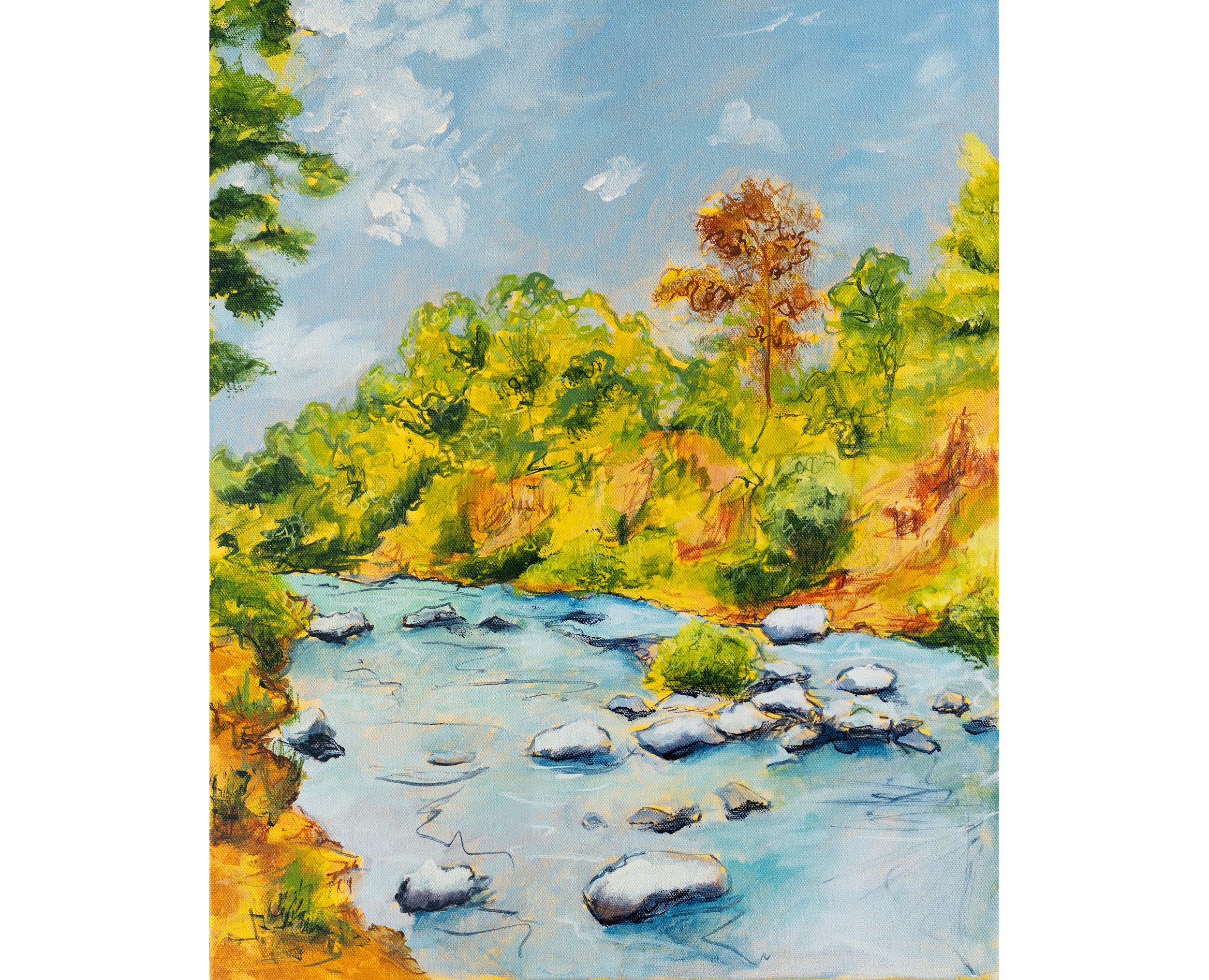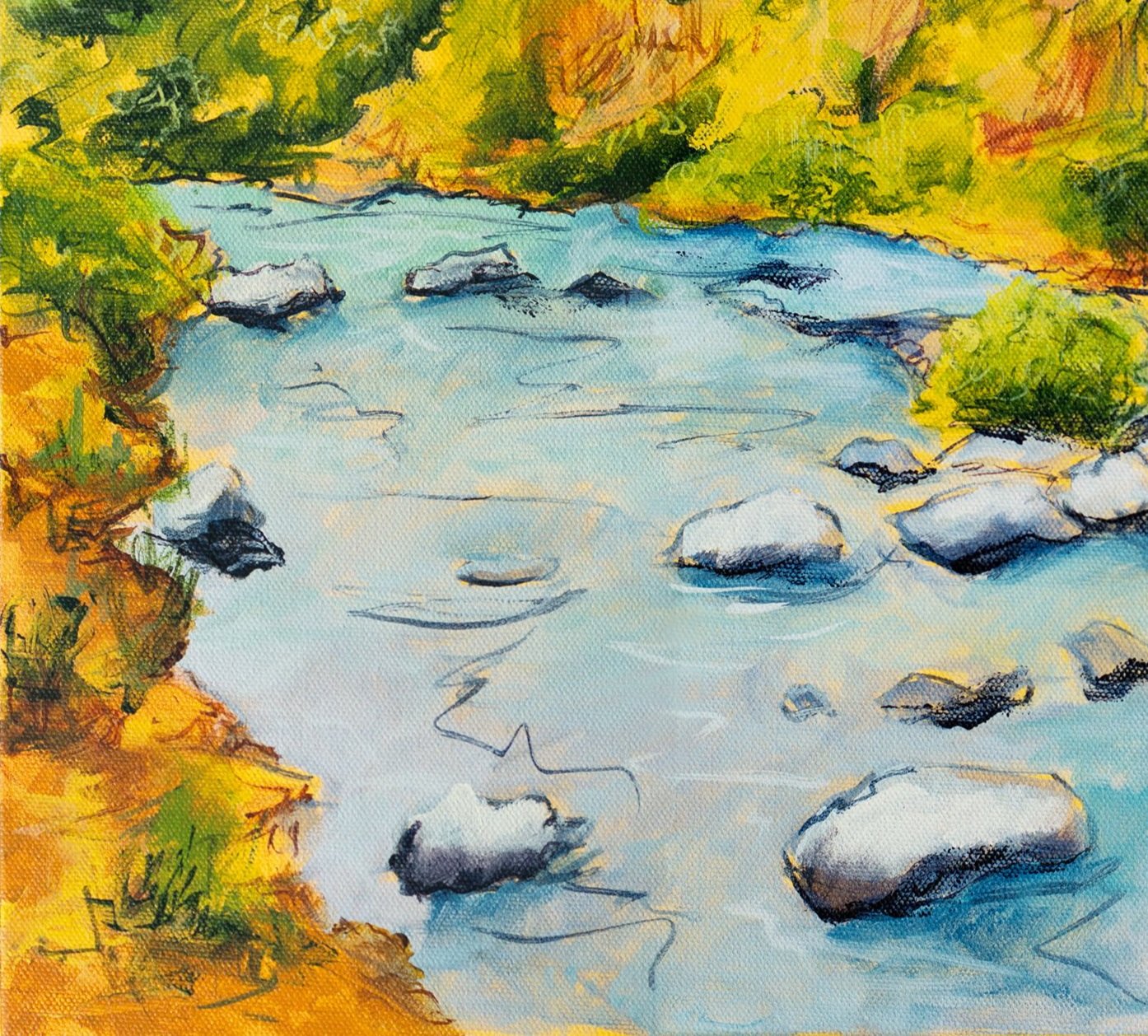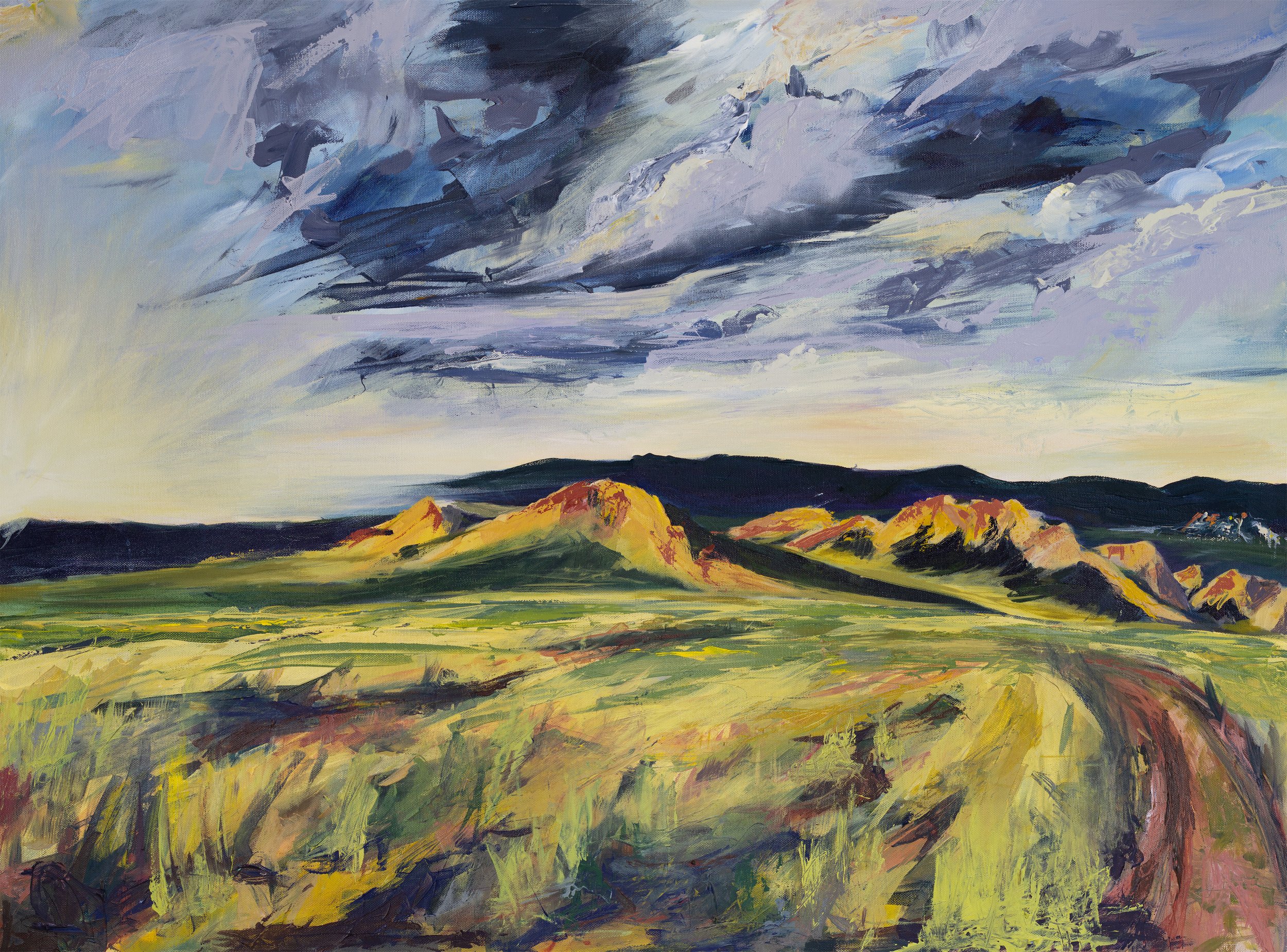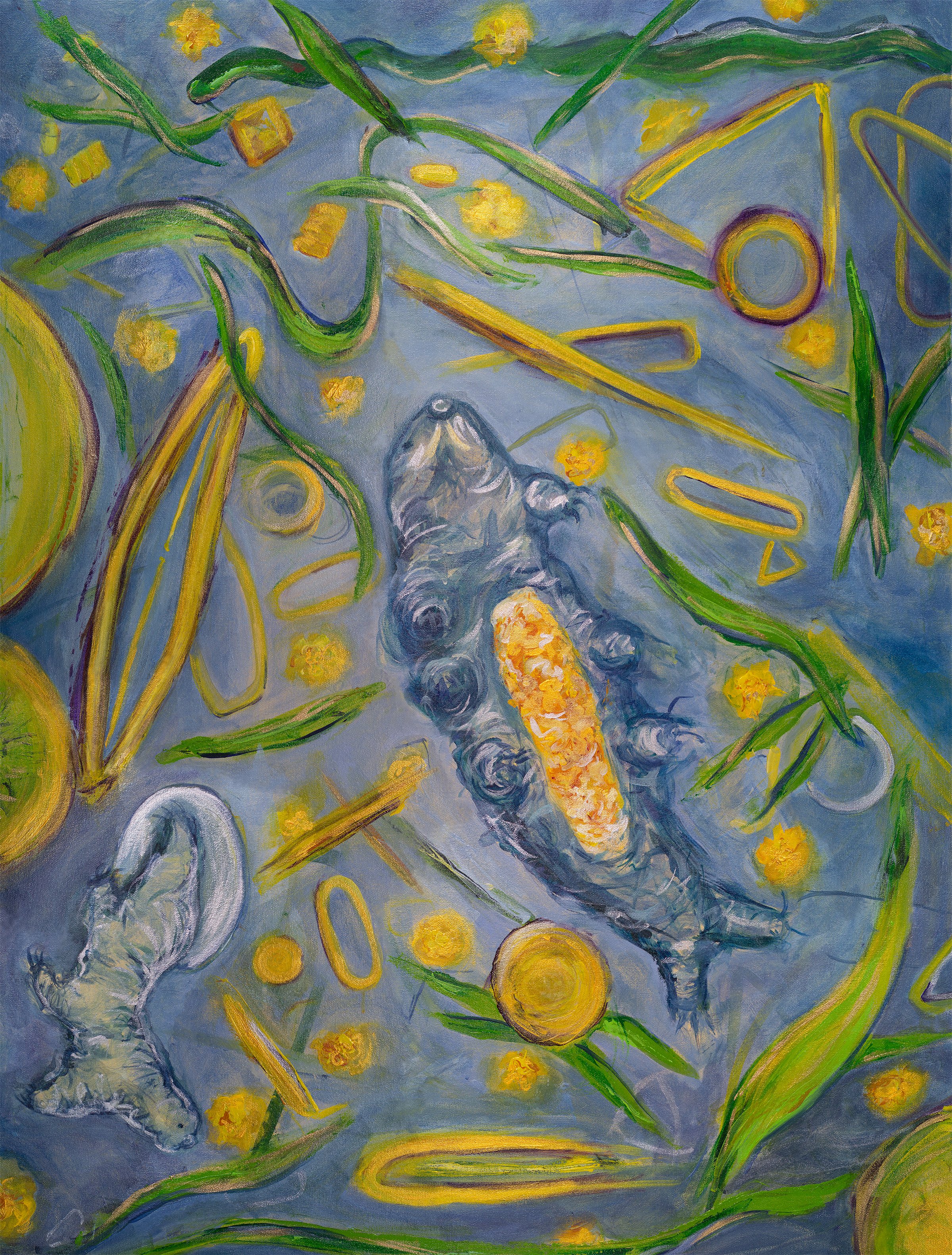 Image 1 of 2
Image 1 of 2

 Image 2 of 2
Image 2 of 2



Dire Wolves // Tar Pits
Downtown Los Angeles happens to be home to one of the most significant fossil deposits ever recorded: a massive assemblage of late-Pleistocene animals has spent tens of thousands of years churning in the sticky black asphalt that claimed their lives so many eons ago. Dire wolves (yes, they were a real thing) are some of the most commonly found fossils in the tar pits, and the Museum at La Brea has displayed dozens of their skulls on a brightly lit orange background – it’s one of the most striking installations I’ve seen (check it out here.)
I filmed with a few of La Brea’s scientists for a PBS Digital Studios episode,The Mystery of Earth’s Disappearing Giants, to learn more about how our planet has changed within the last however many millennia.
This painting touches on ideas about individualism and the inconclusiveness of paleontology. What happened to the megafauna, and what evidence will be left about the rapid domestication of dogs in front of the background of disappearing wildlife and shrinking natural spaces?
Downtown Los Angeles happens to be home to one of the most significant fossil deposits ever recorded: a massive assemblage of late-Pleistocene animals has spent tens of thousands of years churning in the sticky black asphalt that claimed their lives so many eons ago. Dire wolves (yes, they were a real thing) are some of the most commonly found fossils in the tar pits, and the Museum at La Brea has displayed dozens of their skulls on a brightly lit orange background – it’s one of the most striking installations I’ve seen (check it out here.)
I filmed with a few of La Brea’s scientists for a PBS Digital Studios episode,The Mystery of Earth’s Disappearing Giants, to learn more about how our planet has changed within the last however many millennia.
This painting touches on ideas about individualism and the inconclusiveness of paleontology. What happened to the megafauna, and what evidence will be left about the rapid domestication of dogs in front of the background of disappearing wildlife and shrinking natural spaces?
PRINTING INFO
This gallery-quality print can be created on archival paper or unstretched, unmounted canvas. Each print is made to order.
Note: Images are not cropped, so some prints may have white borders at certain sizes if the aspect ratio differs from the original painting.
Prints are signed on the front, signed and dated on the back.
SHIPPING
Shipping is available worldwide and each order will be sent within 5-7 business days. All small prints are carefully packed flat. Larger prints, over 16” on one side, will be sent in a mailing tube.


